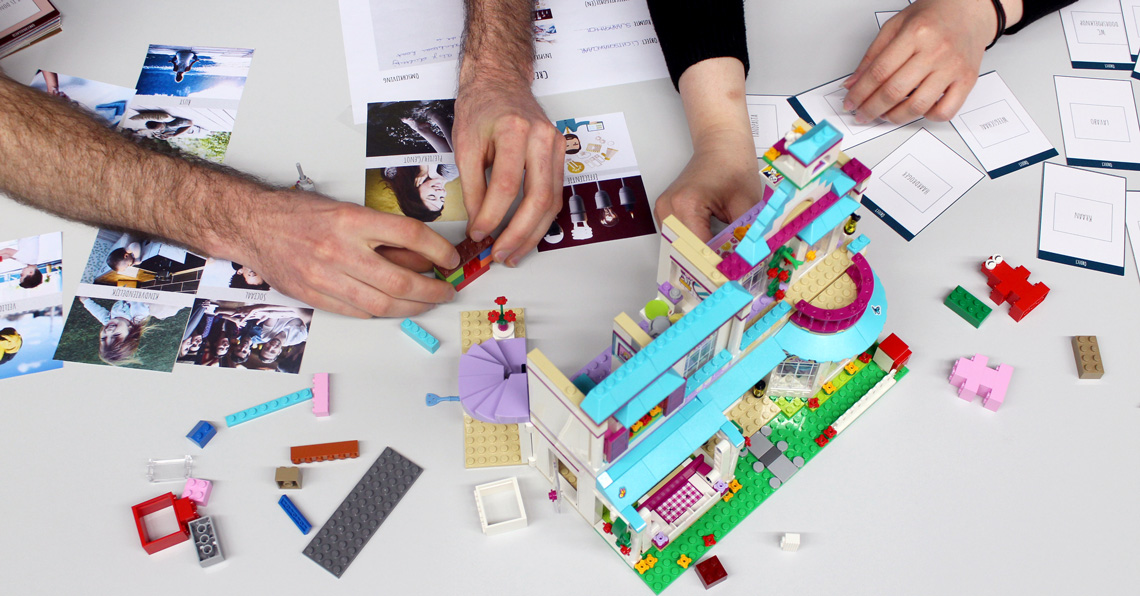Meaningful interactions lab (Mintlab)
Issue: XXVI.5 September-October 2019Page: 16
Digital Citation
Authors:
Bieke Zaman, Roos Voorend, Lawrence Van den Bogaert, Elias Storms, Karin Slegers, Jessica Schoffelen, Kevin Sanders, Isa Rutten, Rob van Roy, Marije Nouwen, Çisem Özkul, Luciana Krebs, David Geerts, Chloé Dierckx, Jan Derboven, Oscar Alvarado
How do you describe your lab to visitors? Meaningful Interactions Lab (Mintlab) is a research group within the Institute for Media Studies (IMS) of the Faculty of Social Sciences at KU Leuven, Belgium. We strive to perform excellent human-computer interaction (HCI) research from a social sciences perspective. Our mission is to design meaningful interactions with technology by actively involving users in a reflective research and design process, and to envision and create valuable interaction designs that make a difference in people's future lives.
What is the one thing you see as most important about the work you do there? Given our name, we put a lot of emphasis on the societal relevance of our work, and aim to have a positive social impact in the projects we work on. We believe in the power of new technologies, but only if they are deployed in a responsible way and when they bring a meaningful and valuable contribution to people's lives. We are very proud of a recent prize that we received at our university, the KU Leuven Society Award Human Sciences 2018, for our research into the blurring of boundaries between gaming and gambling in children. This was a prestigious recognition of research that is relevant to the public debate.
 |
Eating koffiekoeken on a Friday morning. |
How many people are in the lab, and what is the mix of backgrounds and roles? Currently 15 people are working in our lab. One full-time assistant professor leads the lab, supported by a research manager for procuring research projects and managing the group on a day-to-day basis. Two assistant professors have a 10 percent affiliation with our lab, to ensure links with other disciplines such as the arts faculty. Furthermore, four post-doc researchers, two Ph.D. researchers, and three regular researchers are working on various fundamental and applied research projects. We also regularly accept visiting scholars from all around the world; currently, researchers from Brazil, Turkey, and Costa Rica enrich our lab. Our researchers are mostly based in the social sciences and humanities, including communication sciences, sociology, anthropology, psychology, information science, arts, and linguistics.
 |
Field observation in a mobility project. |
What is a unique feature of your lab? As we are situated in the Faculty of Social Sciences, we look at technology from a social perspective, studying people both as users and as creators of technology. Our approach is guided by the principles of value-sensitive design, participatory design, and cultural and interpretative approaches. As we think it is important to share the results of our human-centered design (HCD) process, we also investigate creative ways to improve the dissemination of HCI research, for example, through design fiction or arts-based approaches. We put a strong focus on methodological innovation, and develop and adapt HCD methods to address our research needs. We are especially proud of our ongoing research on using board games as a research method in ideation and co-creation workshops.
 |
Participant in a co-creation workshop. |
What is one feature of your lab that you could not do without? About 10 years ago, we had the opportunity to redecorate a large space that was previously used as a computer room. We had a couple of meetings with our team to determine our needs, and the result was a blueprint for what would become our wonderful design room. It was created with flexibility in mind, based on the various activities we carry out, and consists of a meeting space, a presentation desk (e.g., for brown-bag seminars of colleagues or basement talks—see below), a cozy library, and a workshop space, which is mainly used for affinity diagramming, co-design workshops, or ideation brainstorms, and which contains a wide variety of creative material to support these activities.
 |
Evaluating mid-air haptic feedback in our user experience lab. |
Briefly describe a day in the life of your lab. On Friday, we jointly eat koffiekoeken, a local pastry, for breakfast—it's a weekly moment to informally discuss the past week or upcoming weekend. We start the day by taking stock of who is in the lab and who is not, as there are always some people out observing users, distributing diaries, doing interviews, or teaching students. After breakfast, several colleagues discuss an experiment that will be run in our user experience lab, while others are putting Post-its on the wall for analyzing the results of their field observations. During lunch, a guest speaker gives a presentation as part of our bimonthly series of basement talks, named for our underground location. In the afternoon, two researchers prepare our design room for a co-design workshop in the evening. At 6 p.m., workshop participants start arriving and are welcomed with snacks and refreshments. The day ends at 9 p.m., with freshly collected data that will be analyzed and written up in the next weeks.
We put a lot of emphasis on the societal relevance of our work, and aim to have a positive social impact in the projects we work on.
 |
Using LEGO bricks in an ideation workshop. |
 |
Putting together a probe kit to distribute to participants. |
 |
Board game as research method. |
 |
Field observations in a museum. © Andy Merregaert |
Copyright held by authors
The Digital Library is published by the Association for Computing Machinery. Copyright © 2019 ACM, Inc.



